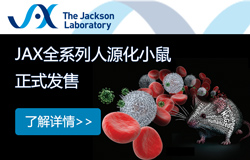葉綠素熒光技術:常量和微量營養元素脅迫測量
植物生長與各種常量和微量營養元素密切相關,所以測量各種常微量元素對植物的脅迫效應具有很重要的意義。大量的研究表明,Fv/Fm、Yield和ETR是與植物CO2固定能力密切相關的三個參數,所以在研究中倍受矚目。
但我們應該知道,植物營養元素的脅迫除非到了非常嚴重或者較為嚴重的程度才會影響到光系統II。這三個參數并不能反映所有的植物營養元素脅迫,有的可以反映輕度脅迫、有的只能反映中度脅迫、有的則只能反映非常嚴重或者較重程度的脅迫。
下面的內容指出了Fv/Fm和 Yield兩個參數在指示作用上的局限性。
Fv/Fm – 暗適應條件下測量
Fv/Fm 對非常低水平的氮素脅迫比較敏感。 (Baker 2004)
Fv/Fm 對較為嚴重的硫素脅迫比較敏感。 (Baker 2004)
Fv/Fm 對鎳元素脅迫不敏感。 (Joshi 2004)
Fv/Fm 對鋅元素脅迫不敏感。(Joshi 2004)
Yield or ⊿F/Fm’ –光照條件下測量
Yield 對較為嚴重的硫素脅迫比較敏感。(Baker 2004)
注:Fv/Fm需要在暗適應條件下測量,可使用OPTIC公司的所有調制式熒光測量儀進行測量,包括OS-5P、OS1P 性價比很高的便攜式OS-30P;Yield的測量需要在光照條件下當葉片達到光合作用穩態的時候進行測量,可使用OPTIC公司的OS1-FL、OS5p進行測量。K-Step、 Performance Index、NPQ、qP、FRFex360/FRFex400等參數則只能使用OS5P進行測量。硫元素和氮元素脅迫可以通過葉綠素相對含量測定儀CCM200進行測量
下面的列表顯示了對不同植物脅迫類型敏感的測量參數,及其應用文獻。
|
營養元素 |
測量參數 |
參考文獻 |
Fv/Fm |
Yield |
|
硼 |
Yield and ETR |
Kastori R., 1995 |
Unknown |
Yes |
|
鈣 |
Fv/Fm |
Shmidts-Eiberger 2002 |
Yes |
Unknown |
|
氯 |
沒有文獻 |
- |
- |
- |
|
鈷 |
Yield |
Joshi 2004 Tripathy 1983 |
Unknown |
Yes |
|
銅 |
1. Yield,
2. Fo/F
測量時間5 minutes |
1. Joshi 2004, Lanaras 1993
2. Adams 2000, Kriedemann 1985 |
Unknown |
Yes |
|
鐵 |
K Step in OJIP |
Jiang 2006 |
Unknown |
Unknown |
|
錳 |
Performance Index in OJIP |
Hermans 2006 |
Unknown |
Unknown |
|
鉬 |
Lack references |
- |
- |
- |
|
鎳 |
ETR |
Joshi 2004 Tripathy 1981 |
No – Joshi 2004 |
Probable |
|
氮 |
1. FRFex360/FRFex440 2.Yield at high light level 3. K-Step
4. Absorption measurement in the green and infrared range to measure chlorophyll content.
5. Yield
6. qP |
1.Sampson 2000 2. Cheng 2001
3. Strasser 2004 4. Peterson 2006 5.Cavender- Bares 2004, Baker 2004
6. Baker 2004 |
只在高脅迫水平比較敏感 Baker 2004 |
能夠很好反映高程度脅迫Cheng 2001 |
|
磷 |
1. Performance index in OJIP
2. Fv/Fm |
1. Ripley 2004
2. Stark 2000 |
Yes |
Unknown |
|
鉀 |
1. Yield
2. NPQ
3. qP |
1, Weng 2008
2. Weng 2008
3. Weng 2008 |
Unknown |
Yes |
|
硫 |
Absorption measurement in the green and infrared range to measure chlorophyll content. |
Peterson 2006 |
只在高脅迫水平比較敏感Baker 2004 |
能夠很好反映較高程度脅迫Baker 2004 |
|
鋅 |
Fs in Yield |
Joshi 2004 Tripathy 1980 |
No -Joshi 2004 |
Less sensitive than Fs |
References:
Adams M., Norvell A. Philpot D. Peverly J. (2000) Spectral detection of Micronutrient Deficiency in ‘Bragg’ Soybean, Agronomy J. 92:261-268
Cavender-Bares J. & Fakhri A. Bazzaz 2004 – “From Leaves to Ecosystem: Using Chlorophyll Fluorescence to Assess Photosynthesis and Plant Function in Ecological Studies”. Jeannine Cavender Bares, Fakhri A. Bazzaz, From Chapter 29,
“Chlorophyll a Fluorescence a Signature of Photosynthesis”, edited by George Papaqeorgiou and Govindjee, published by Springer 2004, PO Box 17, 3300 AA Dordrecht, The Netherlands, page 746-747 ETR Drought stress and npq
Baker N.R, Rosenquist E. (2004) Applications of chlorophyll fluorescence can improve crop production strategies: an examination of future possibilities, Journal of Experimental Botany, 55(403):1607-1621
Cheng L., Fuchigami L., Breen P., (2001) “The relationship between photosystem II efficiency and quantum yield for CO2 assimilation is not affected by nitrogen content in apple leaves.” Journal of Experimental Botany, 52(362):1865-1872
Hermans C, Johnson GN, Strasser RJ, Verbruggen N (2004) Physiological characterization of magnesium deficiency in sugar beet: acclimation to low magnesium differentially affects photosystems I and II. Planta 220: 344-355.
Joshi M.K., Mohanty P. (2004): Chlorophyll a fluorescence as a probe of heavy metal ion toxicity in plants. In: Papageorgiou G.C. (eds.): Chlorophyll Fluorescence: A Signature of Photosynthesis Advances in Photosynthesis and Respiration. Springer, Dordrecht: 637–661.
Kriedemann, P.E., R.D. Graham, and J.T. Wiskich. (1985) Photosynthetic dysfunction and in vivo changes in chlorophyll a fluorescence from manganese-deficient wheat leaves. Aust. J. Agric. Res. 36: 157–169
Lanaras T. Moustakas M. Symeonidis L. Diamantoglou S., & Karataglis S. (1993) Plant metal content, growth responses and some photosynthetic measurements on field – cultivated wheat growing on ore bodies enriched in Cu. Physiol Plant 88: 307-314
Samson G, Tremblay N., Dudelzak A.E., Babichenko S.M., Dextraze L., Wollring J., (2000) NUTRIENT STRESS OF CORN PLANTS: EARLY DETECTION AND DISCRIMINATION USING A COMPACT MULTIWAVELENGTH FLUORESCENT LIDAR Proceedings of EARSeL-SIG-Workshop LIDAR, Dresden/FRG, June 16 – 17
Strasser R.J, Tsimilli-Michael M., and Srivastava A. (2004) - Analysis of Chlorophyll a Fluorescence Transient. From Chapter 12, “Chlorophyll a Fluorescence a Signature of Photosynthesis”, edited by George Papaqeorgiou and Govindjee, published by Springer 2004, PO Box 17, 3300 AA Dordrecht, The Netherlands, page 340
Stark Z., Niemyska B., Bogdan J., Tawalbeh R.N. (2000) Response of Tomato Plants to Chilling Stress in Association with Nutrient or Phosphorus Starvation // Plant Soil.. V. 226. P. 99–106.
Tripathy BC, Mohanty P., (1980) Zinc-inhibited electron transport of photosynthesis in isolated barley chloroplasts. Plant Physiology 66:1174-1178
Tripathy BC, Bhatia B., Mohanty P., (1981) Inactivation of chloroplast photosynthetic electron transport activity by Ni ++. Biochim Biophys Acta 638:217-224
Tripathy BC, Bhatia B., Mohanty P., (1983) Cobalt ions inhibit electron-transport activity in Photosystem II without affecting Photosystem I Biochim Biophys Acta 722: 88-93
Weng X-Y., Zheng C-J., Xu H-X, Sun J-Y., (2008) Characteristics of photosynthesis and functions of the water-water cycle in rice (Oryza sativa) leaves in response to potassium deficiency, Physiologia Plantarum Vol 131 Issue 4 PP 614-621
Copyright(C) 1998-2025 生物器材網 電話:021-64166852;13621656896 E-mail:info@bio-equip.com





